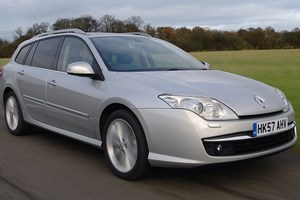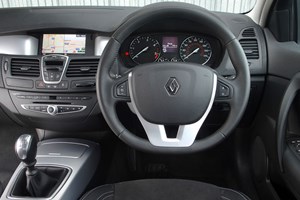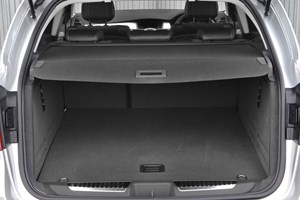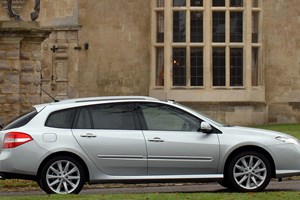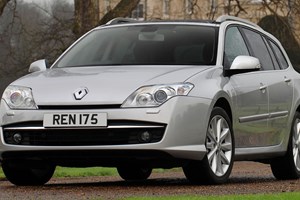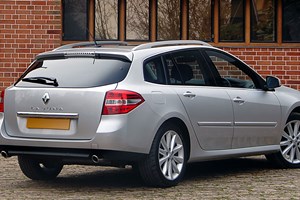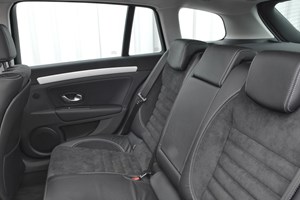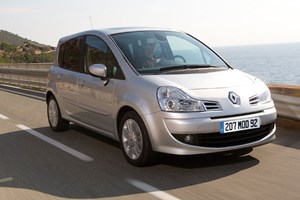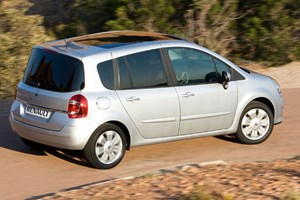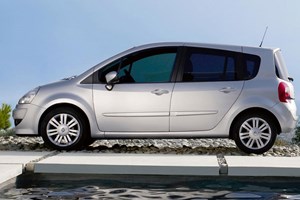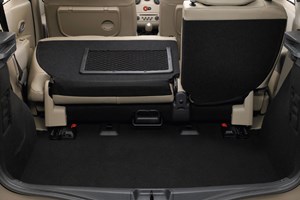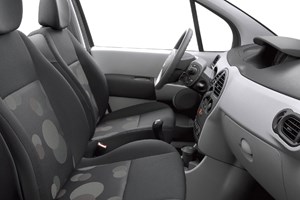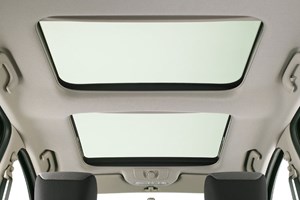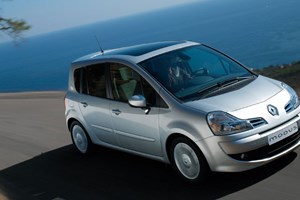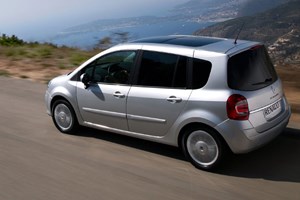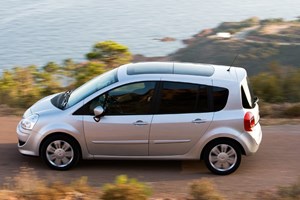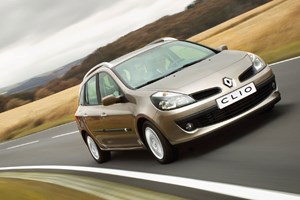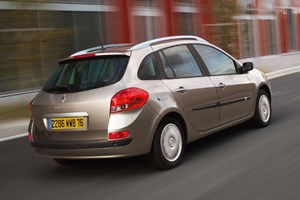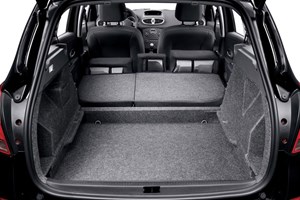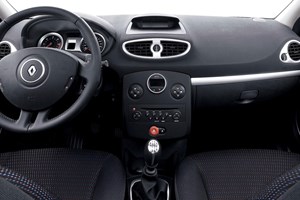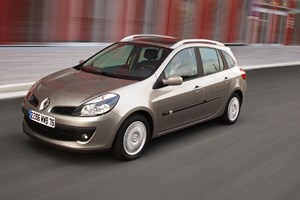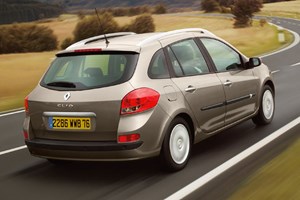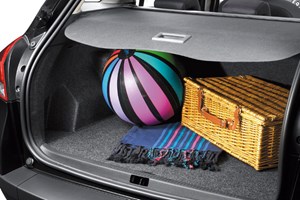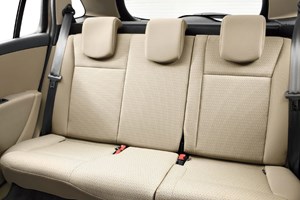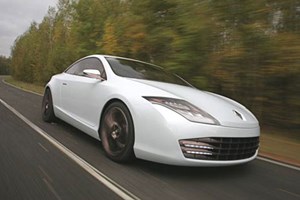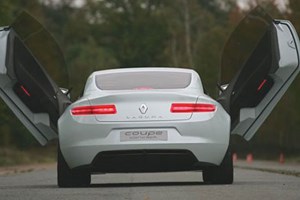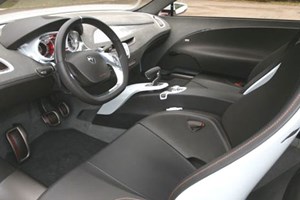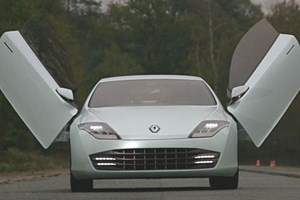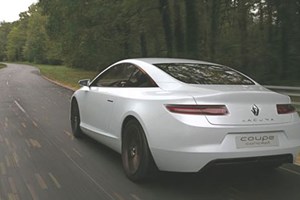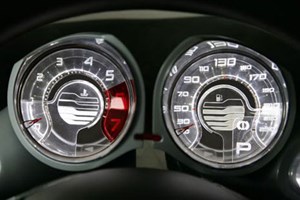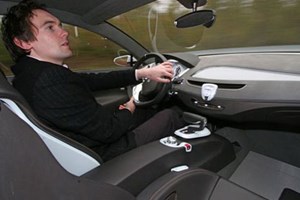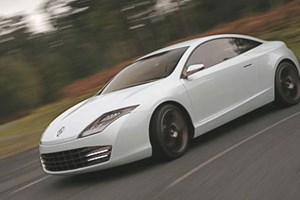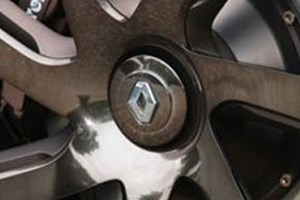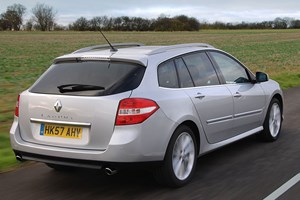
Renault Laguna Sport Tourer 2.0 dCi 175 Dynamique S
| How much? | £21,400 |
|---|---|
| On sale in the UK: | Now |
| Engine: | 1995cc turbodiesel 4-cyl, 175bhp @ 3750rpm, 280lb ft @ 2000rpm |
| Transmission: | Six-speed manual, front-wheel drive |
| Performance: | 8.7sec 0-62mph, 137mph, 42.8mpg, 174g/km CO2 |
| How heavy / made of? | 1513kg/steel |
| How big (length/width/height in mm)? | 4803/1811/1445 |
Renault’s new Laguna hasn’t impressed us yet. Purposively conservative looks, a slightly cramped interior, and a drive that can’t touch that of the Mondeo all count against it. But maybe the Sport Tourer (nee estate) can do better. It’s clearly a ‘lifestyle’ car with a steeply raked almost hatchback like rear window. But to these eyes it’s definitely smarter to look at than the saloon.
So is that all the Sport Tourer is?
Yup. It’s a Laguna estate by another name. The result is a load bay that’s smaller than its rivals: seats up the boot will hold 501 litres to a Mondeo’s 542, and with the seats down the Mondeo bests the Renault’s 1593 litres by a whole 140. But the space you do get is quite usable with no intrusion from the wheel arches and a low lip for loading. The parcel shelf retracts when you tap it, but the release mechanism isn’t the sturdiest bit of kit we’ve ever come across. However it’s a neat idea to have the shelf slotting into the space beneath the boot floor when it’s not needed. The rear seats collapse flat at the push of a button and it’s even handier that there’s sufficient leg room to do it without retracting the head restraints.
Is the boot the only difference between it and the hatch?
Basically, yes. It’s identical to the hatch from the nose to the B pillar, though the more substantial rear end actually helps the side profile by balancing out the beaky front end. Sadly the profile isn’t where the Laguna is most wanting in the looks department. That’s reserved for the headlights which remain oversized and awkward. It’s a shame because the Laguna Sport Tourer has many decent attributes. While we couldn’t get it to unlock automatically the standard keyless start worked very well and locked the car as we walked away, even if the accompanying horn tone is reminiscent of remote locking early Nineties style.
Any other strengths?
Inside the cockpit looks clean and stylish, aided by the electric parking brake. And the seats are comfortable, although the driving position is on the high side. But the most positive part of our test car was its 2.0-litre turbodiesel. With 175bhp it’s got plenty of grunt and never strains so A-road overtaking sounds as calm and unflustered as it feels. It’s a shame they didn’t mate it with a slicker shifting gearbox. The change on the six-speeder is on the poor side of average and feels on the woolly side.
Any other wind ups?
Sadly there are plenty of irritations. Switching on the cruise control is more difficult than it needs to be because the on/off switch is mounted on the centre console, rather than the steering wheel or stalk as most makers do. Having two separate functions on the same stalk for turning on the rear wiper and washing the back window over complicates things. And having over enthusiastic headlight washers that go off and spray the windscreen after the wipers have finished their sweep makes a quick screen clean impossible.
If that’s it with the complaints, tell us what it’s like on the road?
As with the hatch the ride is great on smooth motorway surfaces. There’s plenty of insulation and not much in the way of wind noise so it’s an enjoyable long distance companion. Sadly it’s not so at home on bumpy B roads. The damping is overly keen and makes for a fidgety ride when the tarmac is anything other than billiard table smooth. The steering doesn’t help matters. Despite being accurate it has no feel at all and combined with a degree of body roll doesn’t make the Sport Tourer as much fun for keen drivers as rivals.
Verdict
The trouble with the Sport Tourer is it’s a compromise too far. By making it look sporty Renault has detracted from its ability as a load lugger. Yet it’s still not good looking enough to appeal to buyers who want a car to say all the right things about their image. Nevertheless the Sport Tourer is generally easy to live with although it could have been so much better if a bit more thought had been taken to rectify some of the more basic niggles. Of course it’s still got a large boot but there are other cars in the class that are better carriers. Crucially rivals such as the Ford Mondeo aren’t pretending to be anything other than honest workers, but are better to drive and just as user friendly as the Renault.
CAR's rating
Handling
Performance
Usability
Feelgood factor
Readers' rating
